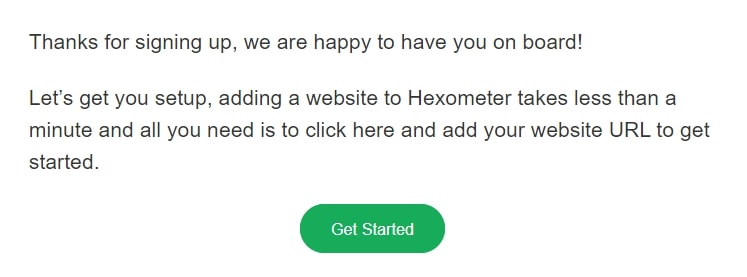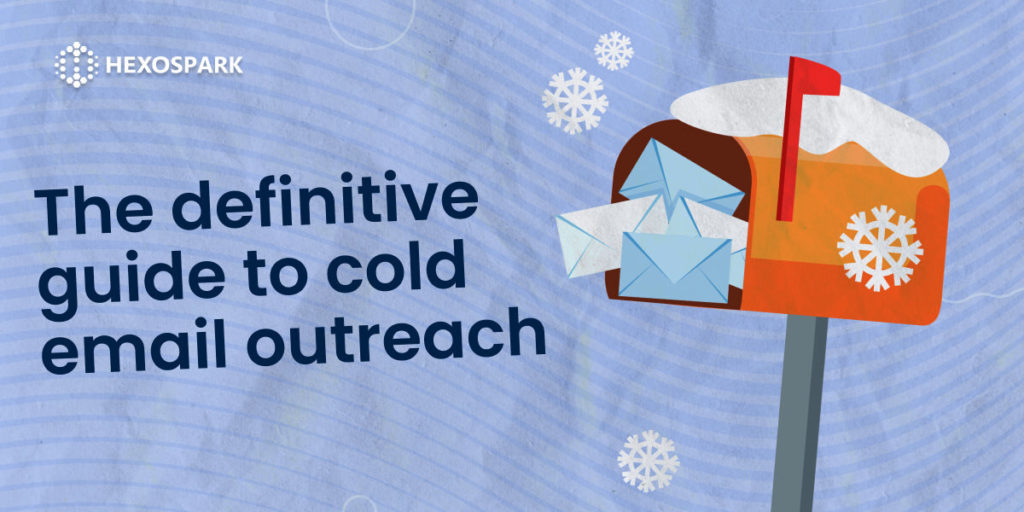Searching for new ways to gain prospective clients? Cold email outreach is one of the most successful outbound marketing strategies if implemented correctly!
What’s great about cold email outreach is that it allows you to connect with your potential customers and generate leads at a lower cost.
In this comprehensive guide, you will learn how to write cold emails that would incentivize anyone to open them and engage with the content, helping you reach your business goals.
Ready to level up your cold email outreach game and boost sales? Let’s dive in now!
What is cold email outreach?
Cold email outreach is when you send a personalized email message to potential customers who have no idea about your business. The main goal of sending the message is to initiate a conversation with the potential client and not directly sell the products or services you have.
Once the receiver answers your cold email, you can gradually convert them into customers. This is how an effective cold email outreach strategy works!
Why should you use cold emails for customer outreach?
Cold email outreach is perfect for the following reasons:
Cold emails are less intrusive– Getting emails doesn’t take much time compared to a sales pitch or a cold call. The recipient can read the email whenever they have time for it.
You can target a wider range of prospects at the same time– The more targeted emails you send, the more responses you may receive.
Cold email outreach boosts your networking skills– Sending cold emails to your potential customers increases your brand recognition. Besides, the recipients may share your email with the ones who might be interested in your offering.
The perfect cold email outreach strategy: How to write cold emails effectively?
There are 7 main steps you should take if you want to create a cold email strategy that actually works!
- Identify your cold email outreach campaign goals and make sure you can measure the results.
- Carry out research and discover your target audience.
- Create a captivating cold email copy that will incentivize your leads to take action.
- Finalize the email and double-check each detail before sending the cold email.
- Prepare follow-up emails to make your cold email outreach campaign even more powerful.
- Scale your campaign gradually
- Perform A/B Testing and monitor the results to find out what works best for your audience.
Now that you’re familiar with the main steps, let’s discuss them separately to ensure you can easily include them all in your cold email strategy.

Step 1- Identify your goals
Before creating a cold email strategy, you should determine the goals you aim to achieve after implementing it. You need to find out what exactly you will achieve and how you are going to measure your results.
Below you can find a few questions the answers of which will help you discover your cold email outreach goals:
🔸 What products or services are you offering?
🔸 Who would be more interested in your products or services? Which companies would be more interested?
🔸 When is the perfect time to reach out to your target audience?
🔸 What do you need to add to your cold email copy to make it more engaging for your buyer persona?
🔸 How many follow-ups will you prepare and how often are you going to send them?
🔸 What are your prospects’ current problems and needs? How will your products or services help them get rid of those problems? How can you track the effectiveness of your cold outreach emails? Do you have a system to track and monitor the emails?
🔸 How can you track the effectiveness of your cold outreach emails? Do you have a system to track and monitor the emails?
Step 2- Craft the perfect customer persona
You don’t want your cold email to appear in the spam folder, right? In that case, you should carry out thorough research and discover who your perfect prospects are. The more information you gather about them, the higher your chances to create the ideal cold email strategy.
Here are a few ways for you to find your potential audience:
🔸 Building a high-quality email list to achieve higher conversion rates.
🔸 Checking the Linkedin profiles to discover your buyer persona’s interests and jobs.
🔸 Searching for the problem you can solve with your products or services on social media platforms (esp. Twitter and Facebook Fan Pages).
🔸 Checking your prospects’ liked pages and shared content on social media platforms.
🔸 Performing competitor research and finding out their customers.
Once you are sure you’ve found the perfect fit for your product or service offering, you can collect your prospects’ names and contact details to reach out to them. Collect them by searching for their names on Google or using some prospecting tools to gather their email addresses.
After gathering the email addresses for your cold email outreach campaign, your next step should be verifying the list with the help of verification tools.
Verification is a crucial step that you should never ignore. You would never want the emails to bounce back to your inbox or be marked as spam, would you?
The verification of your email list will mean the gathered data is accurate and your cold email will reach the real person ensuring the success of your cold email outreach.
Step 3- Create an appealing cold email copy
Remember that you’re not the only one to send your prospects cold emails! They may get dozens of emails from different companies that offer their products and services. So, what are the chances they ignore other emails and open yours instead?!
You will succeed only after you evoke certain emotions in the email recipient that will serve as triggers for them to take the desired actions. How can you do this? Only by creating a unique cold email copy.
Below you can find a few pieces of advice to help you create a personalized copy that can drive conversions:
✍️ Master the art of cold email subject lines
The person that gets your emails pays attention to cold email subject lines first. If they are captivating, the reader will be eager to read the rest and as a result, will be interested enough to open your cold email.
Here are the key features you should implement to write one of the best subject lines for cold email outreach:
- Be clear and concise (max 60 characters)
- Make it informative
- Create a sense of urgency
- Add engaging elements (for example, emojis, but don’t make it look spammy)
- Sound natural, not robotic
✍️ Personalize your cold email and provide value
As we have discussed earlier, it’s important to perform research on your target audience to create personalized cold outreach emails for each of them. For instance, if you know that your prospect’s hobby is snowboarding, you can mention it in your email to make it more personalized. This will definitely boost your open rate!
You may find it boring to personalize all the cold emails that you’re going to send but it is worth the effort.
Personalized cold outreach emails include how the recipients understand the world, what hobbies they have, what their pain points are, and how they want to achieve their goals.
Once you gather this type of information you can use it to attract their attention and engage them with your emails.
You can include some of the following details in your cold emails to personalize them effectively:
- The recipient’s name and surname
- The place they live
- Their interests and hobbies
- Education
- Career
- Accomplishments
- Favorite sports, colors, animals, etc.
- Any online mentions
- Any common connections
Even if you use a cold email template, you should never make it obvious that you’ve used these templates when writing the script. The information there should sound natural and original. You should also add a maximum of 3 pieces of personal information about the recipient in one email.
✍️ Add a compelling CTA
The main purpose of CTAs is to incentivize the readers to take your desired action. CTAs can make the email recipient realize that they really need your products or services, buy your products, sign up, subscribe or arrange a demo.
Of course, your goal is to make the reader buy your product but you shouldn’t ask them to do so immediately. Your readers should not be the ones to guess what action they need to take. Guide them through the cold email and make sure to add one CTA for one offer.
Remember that having one CTA for one special offer and adding a CTA button instead of plain text will boost your click-through rate.

✍️ Don’t copy and paste cold email outreach templates
Cold email outreach templates are great if you want to create a perfect structure for your email. But do you think it will serve its purpose if you just copy and paste the template you find on Google?
The short answer is NO! As you already know your cold email outreach campaign will not succeed if you don’t personalize the email for each recipient. No matter how well-structured the template is, it will lead to failure.
How can you avoid this? Instead of copy-pasting the cold email template, you can search for cold outreach email examples. The latter will help you create your own personalized version based on the specific information you’ve gathered about your prospects.
Step 4- Perform the final check before sending the email
Before you send the cold email to your prospects, ask yourself the following questions to make sure your cold email copy is perfect:
✔️ Does my email look spammy?
✔️ Is the cold email copy great for my target audience?
✔️ Do I have one CTA for one special offer?
✔️ Is my email body too long or do I respect the reader’s time?
✔️ Is the information clear or confusing?
✔️ Is the copy properly personalized?
If you answer “YES” to the above-mentioned questions, then you have a high chance to succeed in your cold email outreach.
Go ahead and hit that Send button!
Did it? Remember that this isn’t the end of your journey. Read on to find out why you need to follow up and monitor your cold email outreach results.
Step 5- Adjust your email sending velocity
it’s easy to get swept up in the notion of ‘more is better.’ In the realm of email marketing, however, this philosophy can prove counterproductive, particularly when it comes to cold email outreach campaigns. The prudent strategy is to start small and increase the volume gradually. Here, we explore why it’s important to begin with just 30 emails per day per account, escalating this number as your outreach earns more responses and your email account accrues trust with email service providers.
Ensuring Deliverability: A Case Against Spam
The immediate consequence of firing off a mass quantity of emails is a potential red flag to your email service provider, which can categorize your account as a potential source of spam. The implication of such labeling can be detrimental, impacting the deliverability rate of your emails significantly. By choosing to incrementally increase your email volume, you allow the email service provider the necessary time to identify your account as a genuine, credible source of communication, mitigating the risk of your emails landing in the spam folder.
Sender Reputation: The Key to Sustainable Email Marketing
Each email sent from your account plays a role in determining your sender reputation. If your account suddenly upscales its email dispatch, and these emails remain unopened or worse, are marked as spam, your sender reputation score will plummet. The consequence is a decreased deliverability rate for future emails, affecting your engagement with even those recipients who have opted in to your communications. A gradual increase in emails, however, tied to a positive interaction rate from the recipients, contributes to the build-up of a reliable sender reputation.
Quality Over Quantity: Personalization for Greater Engagement
A smaller number of emails offers the opportunity to focus on personalization and segmentation of your audience, both proven strategies to boost engagement rates. Tailoring 30 emails per day to the unique needs and interests of potential clients is a much more manageable, and ultimately rewarding, task compared to customizing hundreds. Moreover, starting with a smaller volume of emails offers the scope to trial, refine and optimize your strategy based on feedback and response rates.
The Bigger Picture: Analyzing and Optimizing Performance
The benefits of a gradual scale-up extend beyond just avoiding the spam folder and ensuring deliverability. This approach allows for the careful analysis of performance data, the flexibility to make necessary adjustments, and the ability to optimize the campaign for ultimate success. As more positive replies flow in, your email account gains credibility, thereby allowing for a safe increase in the number of outgoing emails.
The core objective of any cold email outreach campaign should be meaningful engagement with potential clients, offering them content that resonates with their needs and interests. Speeding up the process may seem tempting as a shortcut to instant results, but it often compromises these vital factors.
Step 6- Send follow-up emails
What happens if you send a cold email but get no response from the recipient? In this case, you should send them follow-up emails to get your message noticed.
One of the main mistakes of marketers is that they find follow-up emails annoying and skip this crucial step. In fact, sending follow-up emails triples the reply rate!
So, how many follow-up emails are considered normal and not annoying to the readers? Most marketers came up with the idea that they need to send at least 5 follow-up emails to close the deal successfully.
Remember that follow-up emails shouldn’t contain the same copy as your first cold email copy. They should be short, and concise and remind the reader about your first pitch.
The perfect time to send your first follow-up email is in 2-3 days after receiving your cold email.
Pay attention to the tone of your follow-up emails and communicate your message clearly without sounding angry and desperate. The recipient could be busy or forgot about your email. Judging them with your follow-up emails would make it even worse.
Step 7- Improve your cold email strategy with A/B Testing
The last but also important step of cold email outreach is tracking the open and conversion rates to monitor the results and make improvements if necessary. If you don’t measure the results, you will not find out whether the cold email outreach campaign was successful or a total failure.
You can get the most out of your email outreach if you perform A/B testing of your cold email outreach.
A/B testing is the way you test two different campaigns l to discover which elements are more effective. The more you test, the better you’ll understand which element brings you more clicks, opens, and responses.
How can you perform effective A/B testing?
Once you create two versions of the same cold email, you can send the first version to about 15% of your potential prospects. Then, send the second one to another 15%.
After a certain period, choose the version that has been more effective and send it to the remaining portion of the list!
Remember that open rates vary based on the industry, so try to find out the average open rate for a specific industry and compare the results with yours. If they are lower, go on with the tests until you design the perfect email for your cold email outreach campaign!
Final thoughts
Cold email outreach is one of the most effective forms of outbound marketing. If you create the right strategy, cold emails will help you expand your customer base and make them take your desired action.
Follow the basic steps mentioned in the article and you’ll be able to reach your business goals with a well-thought-out cold email strategy!


Content Writer | Marketing Specialist
Experienced in writing SaaS and marketing content, helps customers to easily perform web scrapings, automate time-consuming tasks and be informed about latest tech trends with step-by-step tutorials and insider articles.
Follow me on Linkedin



